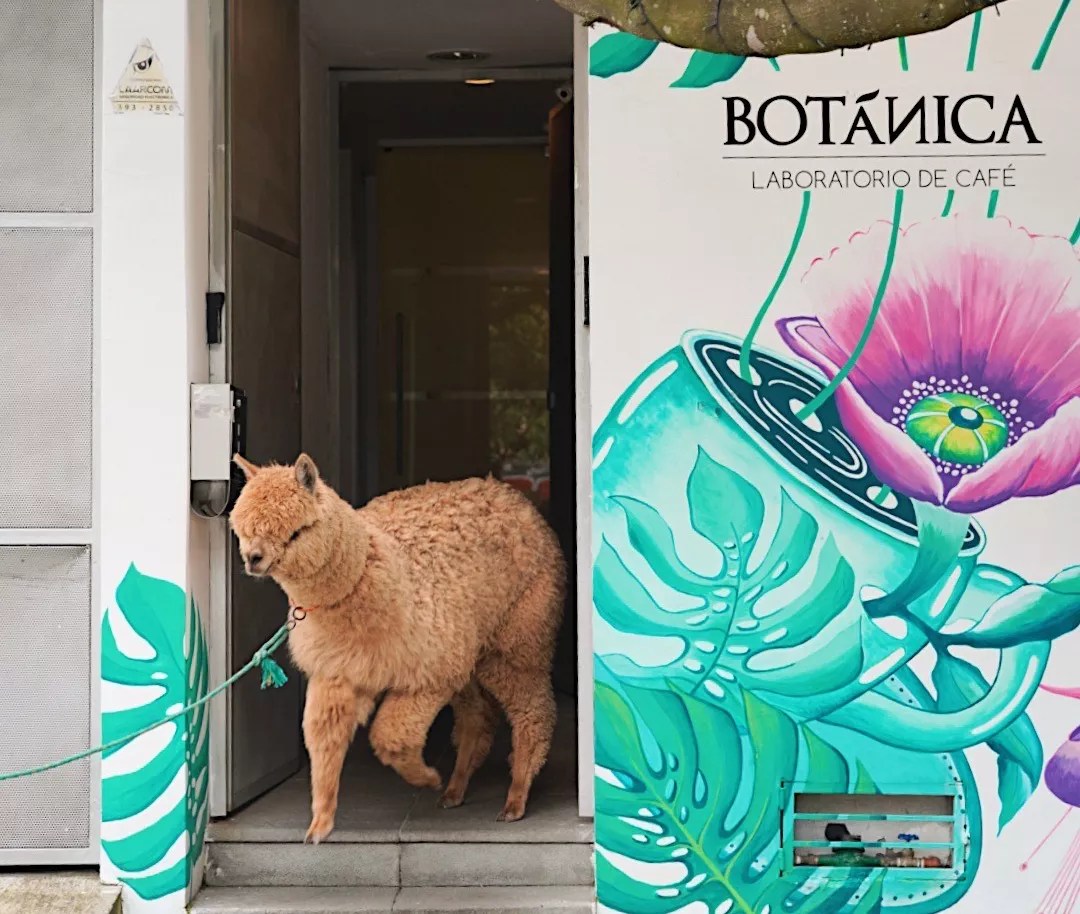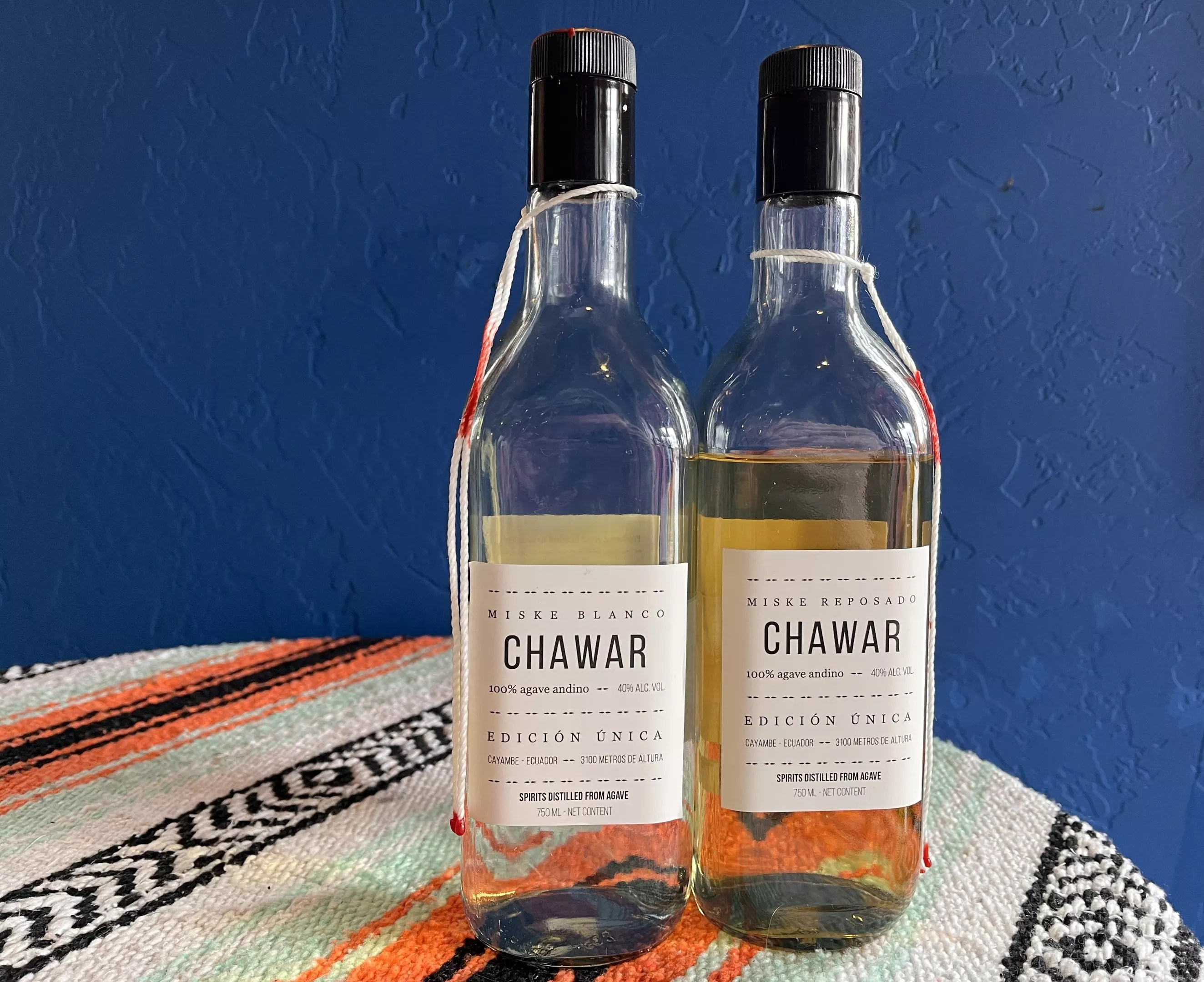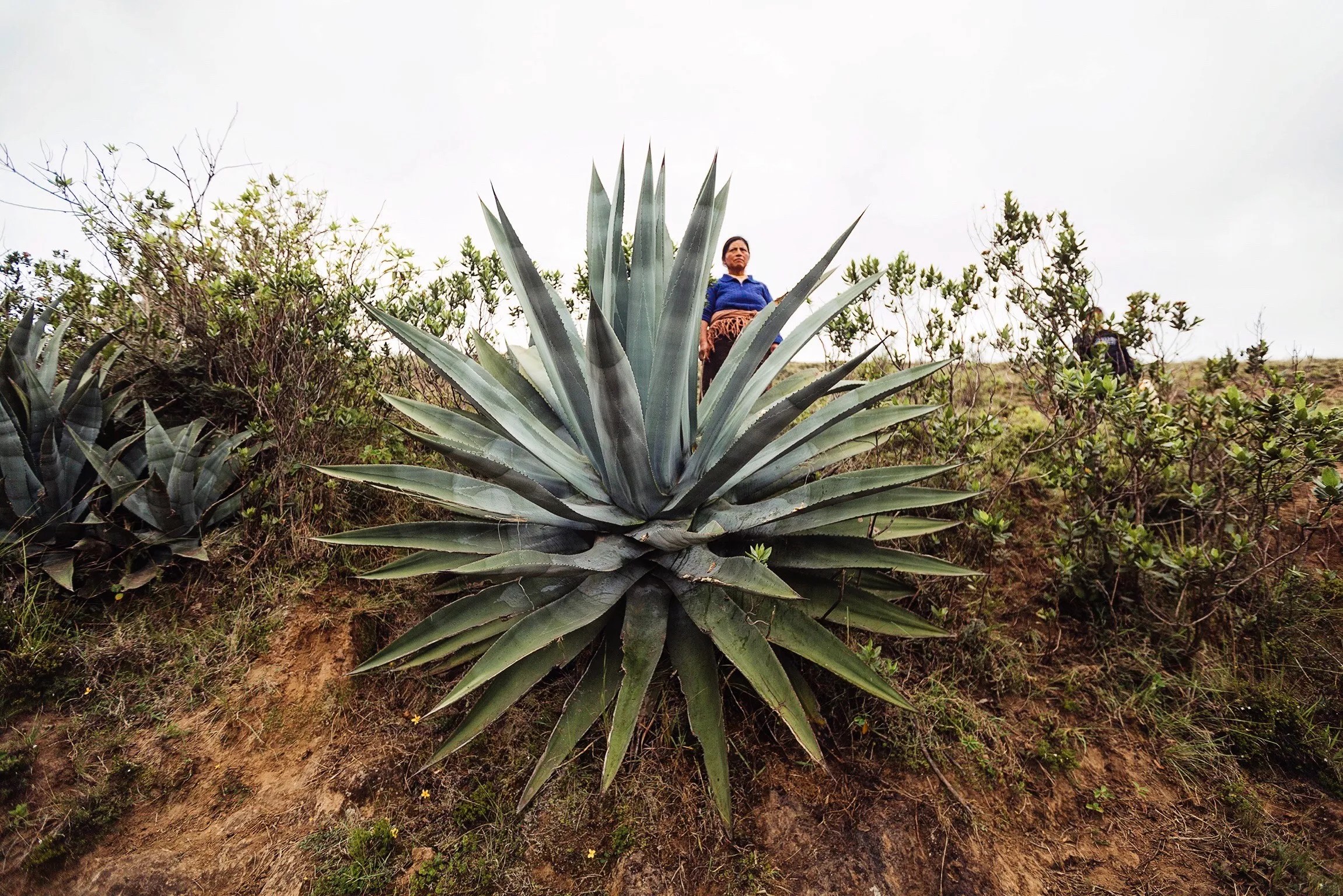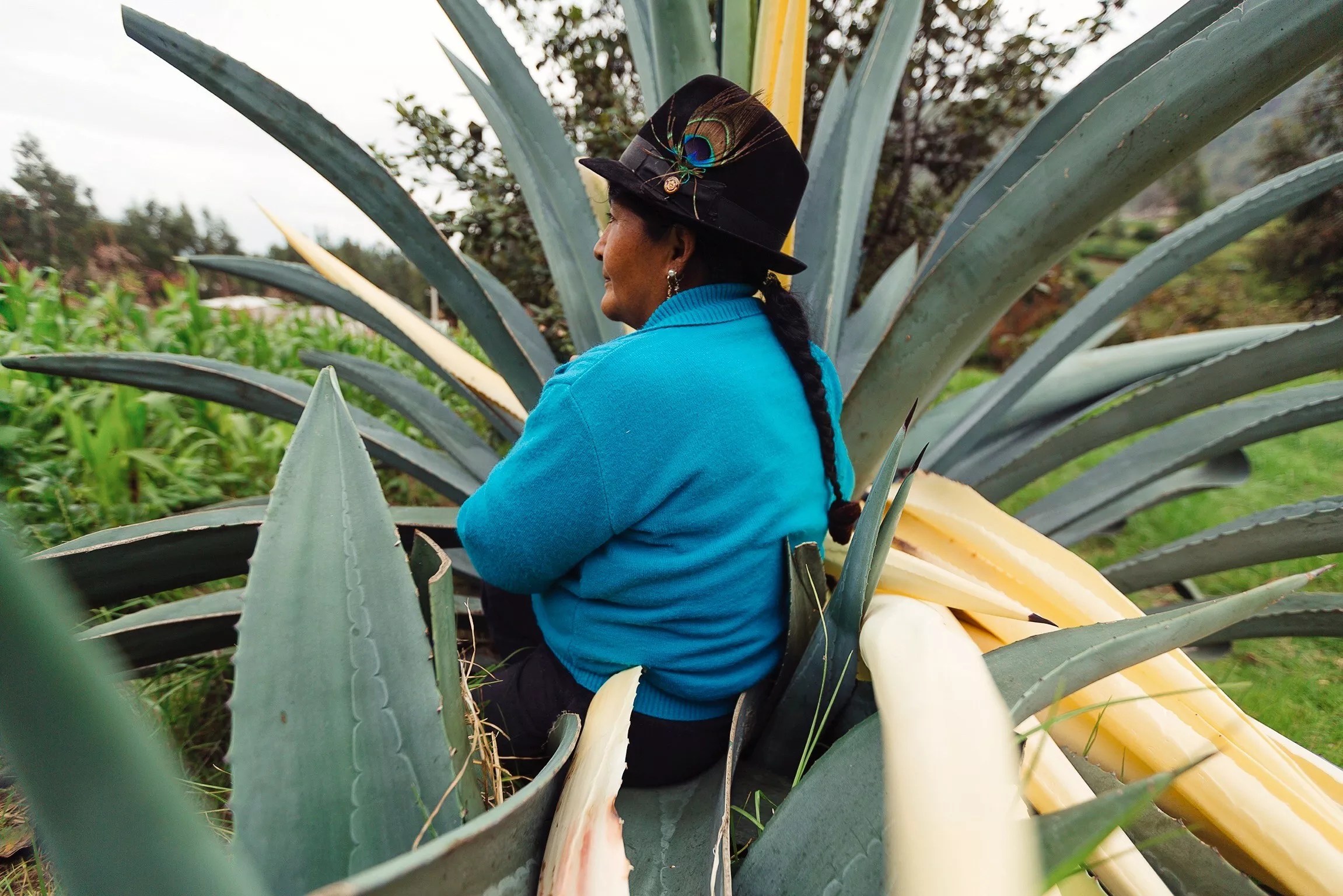
Chawar

Audio By Carbonatix
A few years ago, Eliot Logan-Hines was selling an esoteric mezcal out of his garage in Quito, Ecuador. Now he’s parading a small herd of alpacas around the American West. The one thing these two most uncommon activities have in common: Logan-Hines’s passionate promotion of miske, an agave distillate from Ecuador that he’s hoping to resurrect locally in the spirit’s homeland while also propelling it toward global recognition though his liquor brand, Chawar.
This spring, Logan-Hines and his alpacas will be at a series of events in the Denver metro area to promote Chawar and the culture it represents:
- April 28: Bottle Shop 33 in Wash Park from 4 to 6 p.m.
- April 29: Mister Oso Wash Park from noon to 2 p.m.
- May 12: North Boulder Liquor Store from 4 to 6 p.m.
- May 13: SoBo Alpaca Pub Crawl starting at Somebody People from 4 to 7 p.m.
- May 25: Littleton Pub Crawl starting at Palenque from 5 to 7 p.m.
- May 26: Argonaut from 4 to 6 p.m.
- May 26: Uptown Pub Crawl starting at Retrograde from 7 to 9 p.m.
- June 2: Destilados de Agave at Golden Liquors from 4 to 7 p.m.
The alpacas come from Logan-Hines’s ranch in Taos, and he says they are legitimate brand ambassadors, albeit very cute ones. “They, just like Chawar miske, are from the Andean landscape, and especially in Ecuador,” he explains. “That distribution of having llamas and alpacas is very much disappearing. So it’s also about that idea of tapping into the ancestral traditions and what used to be in our landscape and sort of bring that to the consumers as they drink.”
Chawar can be found in bars and restaurants in Colorado, as well as a few other select U.S. markets, including Florida, New York and Texas. Recently, Chawar has been incorporated into the cocktail list at Hotel Jerome in Aspen; featured at pop-up events at agave-centric concepts such as Bruto and Señor Bear; and even hosted its own 4/20 event in 2022, dubbed Let’s Alpaca Bowl.

Miske is an agave distillate from Ecuador.
Tony White
Logan-Hines says that the response to the spirit has been a mix of intrigue and pleasant surprise, adding that miske’s flavor has been dispelling the deductive notions that mezcal is overly smoky or that tequila is a sinister drink that leads to regrettable debauchery on spring break. “I can win over those drinkers because it’s really soft, smooth, delicate, floral, easy-drinking,” he notes.
There are big plans for this small startup. The path to Chawar began on a five-acre farm in Costa Rica that Logan-Hines bought when he was 21 and had little money and no Spanish-language skills. He explains that his time working with local coffee growers for several years and analyzing the agricultural and economic struggles they face was a life-changing experience. After that, he promoted new agricultural techniques and focused his energy on local reforestation efforts to rejuvenate the land and reduce its long dependency on coffee production. In 2008, he entered grad school at Yale on a full-ride scholarship in the environmental management program, and later worked with climate change groups at the United Nations. But he says he grew disenchanted with the U.N.’s system of simply distributing money to encourage countries to lower their emissions.
Again, Logan-Hines had a new perspective to an ingrained problem. “I got really into this idea of Indigenous knowledge of plants and how we can tap into this knowledge about how these people have been taking care of the earth for thousands of years, and what if we could create a market for that in a way that would support Indigenous people?” he poses.

Chawar is made from the distilled sap of the agave Americana.
Chawar
Logan-Hines also pushed back against the basic structure of national parks, where Indigenous people are ultimately displaced and the federal government regulates the land’s uses. These ideas eventually earned him a MacArthur Fellowship in 2018. He chuckles as he thinks about how it actually played out. “[It] is kind of crazy that I started a liquor company with a grant from a big nonprofit,” he admits. “What if we were to just really think about how it is that Indigenous people use plants and create a market for it where the money gets back to those people? It’s a tool for conservation, and it’s sort of a different idea.”
While he may be presenting new concepts on a conservation level, the spirit of miske itself has deep cultural roots in Ecuador. Miske is made from sap collected from the heart of the agave Americana, which grows in the highlands of Ecuador and takes up to fifteen years before reaching maturity. In the native Quechua language, this sap is called chawarmishki, which means “raw” and “sweet” and lends Chawar its name.
Andean women have long played a leading role in miske’s production by trekking the mountainous terrain to collect the sap before open-air fermenting and distilling the liquid into a higher-proof spirit. As part of the Chawar project, Logan-Hines helped establish Ecuador’s first all-women harvesting cooperative, called Mishkita (which is, again, derived from the word chawarmishki). The co-op’s intention is to create a perpetual support system for the producers coming from within their community and beyond his own involvement.

Andean women trek mountainous terrain to collect the sap for miske.
Chawar
“Trust is something that we have to constantly win and work with them to make sure we’re all doing this in a respectful way that everybody’s benefiting from,” Logan-Hines adds. He is quite personally involved in the production process; his husband, Robin, who is an architect and indigenous to the Amazon, designed and built the Chawar distillery in the village of Yaruqui, outside the capital city of Quito.
Logan-Hines says that commoditizing a crop in a sustainable way is one objective, but organizing a cooperative that directly benefits the producers as the brand grows is a main priority with Chawar. “I really wanted [the women] to be organized so that in the future, they’re going to be solid enough to make sure that they don’t get taken advantage of and that they can make money off of their knowledge and their plans,” he explains.
Chawar is nothing short of an ambitious project for Logan-Hines as he works to locally resurrect an agave spirit from its lost history in Ecuador while simultaneously launching it into the international market. He’s looking to transform an entire region’s perception on forestry and agriculture while building systematic support for the people and communities behind miske. It’s a lot for an agave spirit brand pushed by alpaca pop-up parties, but Logan-Hines says his idea of success, and the brand’s intention, is a bit more serious.
“I would love to see [how] this could really transform the way agriculture is done in these dry, arid areas of the Andes Mountains and really create value for that whole ecosystem,” he concludes. “My big goal is that we become Ecuador’s national spirit, to give life and support to these women, to really give life to this tradition.”